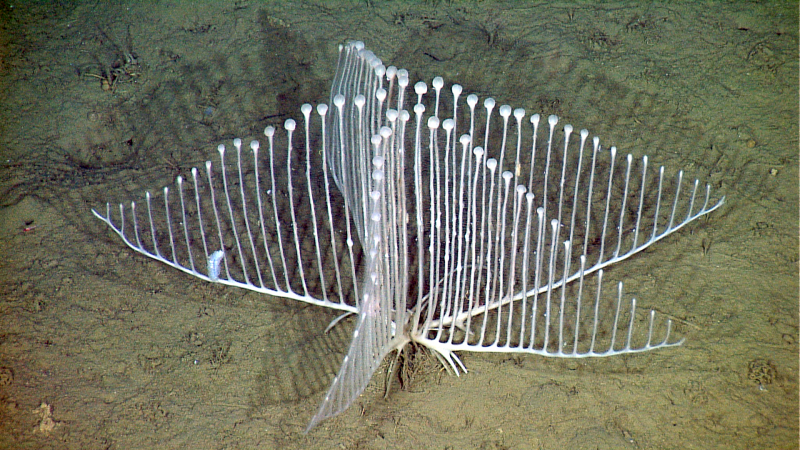Harp sponge

Top 4 in Top 8 Weirdest Deep Sea Fish
A type of carnivorous deep-sea sponge called the harp sponge, also known as the lyre sponge, was initially found by Welton L. Lee, Henry M. Reiswig, William C. Austin, and Lonny Lundsten from the Monterey Bay Aquarium Research Institute off the coast of California.
Typical sponges are suspension feeders that use their aquiferous system to filter out bacteria and other small creatures from the water around them. However, C. lyra and other carnivorous sponges use the velcro-like hooks on their external body surfaces to catch much larger prey, such as copepods and other crustaceans. Once the prey is caught in the sponge's hooks, the prey is broken down so that the C. lyra can absorb it through its pores by means of a digestive membrane that is secreted by the sponge.
Off the coast of northern California, in the northeast Pacific Ocean, at the Escanaba Ridge and the Monterey Canyon, Chondrocladia lyra has been discovered. With estimations ranging between 3,000 and 5,000 m, specimens have been discovered in soft abyssal sediment at depths between 3,316 and 3,399 m, attached to the seafloor by rhizoid that resembles roots. In the Monterey Canyon, where their prey is drawn into the small crevasses the sponges occupy, they have been spotted rooted on the sides of hills and the canyon's floor. Although it has only been seen off northern California, it probably has a latitudinal range of at least 1,600 kilometers.








